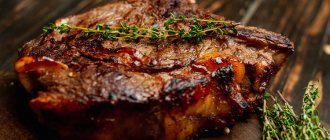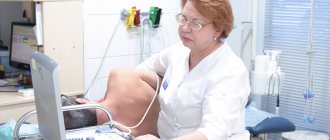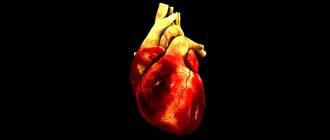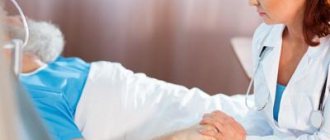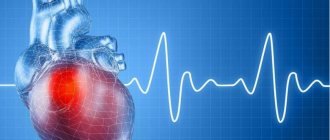September 3, 2010
Doctors are confident that a special diet can improve blood circulation and cope with the first signs of heart disease.
The heart is the only muscle in the body that works continuously and pumps blood, which supplies nutrients and oxygen to the entire body. How effectively it will work also depends on what we eat. Doctors are confident that the nutritional system developed a long time ago called “diet No. 10” can improve blood circulation and cope with the first signs of heart disease.
General rules
The main objectives of patient rehabilitation after a heart attack and stenting are to restore the patient’s vital functions and reduce the risk of a recurrent attack. The success of rehabilitation measures is largely determined by the correctness of therapeutic nutrition. The diet for myocardial infarction is aimed at:
- normalization of cardiac muscle function and acceleration of reparative processes in the myocardium;
- reducing the load on the cardiovascular system and improving blood circulation in general;
- stabilization of body weight in the presence of obesity ;
- normalization of motor function of the gastrointestinal tract.
The basic principles of nutrition for post-infarction patients are:
- reducing fat consumption (especially foods containing large quantities of saturated fatty acids);
- increasing the consumption of polyunsaturated fatty acids, which reduce blood lipid levels;
- restriction of free fluid;
- increased consumption of foods containing complex carbohydrates and fiber;
- limiting table salt to 3-5 g per day;
- cholesterol in the diet .
Therapeutic nutrition after myocardial infarction is based on the dietary Table 10I and 10 . The diet contains a physiologically normal amount of protein - 80-90 g (60% of animals), limited fat content - up to 70 g of fat (mainly animal) and 350-400 g of carbohydrates (of which simple carbohydrates account for about 30 g), table salt consumption is no more than 3-5 g per day. The energy value of the diet is 2300-2400 kcal. The amount of free fluid is 1.2 l/day.
The diet is enriched with Vitamins A , C , D and water-soluble vitamins that improve metabolic processes in the myocardium, which is achieved by including in the diet the optimal amount of vegetable fat, fresh vegetables and fruits, some cereals (buckwheat, oatmeal), and some meat products (veal).
In order to normalize the electrolyte composition of extracellular/intracellular fluid, which is of great importance in disrupting myocardial metabolism, foods containing increased amounts of potassium are introduced into the diet. This is achieved by including diseased fruits and vegetables, juices and decoctions from them in the diet. To improve the contractile function of the heart, calcium is important, which enters the body with dairy products and the presence of which in the diet is mandatory, especially if the heart attack was extensive.
Other microelements (manganese, magnesium, potassium, iodine), necessary for the normal functioning of the heart muscle, are compensated by the presence in the diet of various products of plant and animal origin, in particular, various seafood (squid, mussels, shrimp, seaweed). To reduce the load on the cardiovascular system, Table 10I provides split 5-6 meals a day with the last meal 3 hours before bedtime.
All foods that have a stimulating effect (coffee, tea, chocolate, spices, cocoa) are excluded from the diet. The proportion of products containing dietary fiber (vegetables, cereals, fruits), consumed in the form of salads or independent dishes, is increasing. It is recommended to include different varieties of “white” fish in the diet, since unsaturated fatty acids from fish fats improve cholesterol . In order to normalize the function of the gastrointestinal tract, difficult-to-digest foods that promote fermentation in the intestines and cause flatulence , as well as extractive substances from meat and fish products, are excluded from the diet.
Dietary nutrition after a heart attack for men and women is based on the stage of rehabilitation:
- Stage I - acute period (first week after a heart attack) - gentle food (steamed or boiled with puree), with the complete exclusion of table salt. Eating 6-7 times a day, in small portions. The total weight of the daily diet is 1700 g. The energy value of the diet is 1100-1300 kcal, containing proteins, fats and carbohydrates in quantities of 60, 30 and 180 g; free liquid - up to 0.8 liters. The menu may include: first courses with vegetable broth with pureed vegetables and cereals; steam cutlets, lean beef meatballs, pureed cottage cheese, egg white omelette, boiled lean white fish, crackers (up to 50 g), low-fat kefir; mashed boiled beets, carrots, or potatoes, oatmeal or buckwheat porridge, mashed with milk; liquid jelly, jelly, fruit drinks, rosehip decoction, infusion of dried apricots, prunes or raisins; weak tea with added milk, fruit juices diluted with water, carrot juices, alkaline still mineral water (still). All dishes should be warm; butter, refined and vegetable oil should be added only to ready-made dishes.
- Stage II - subacute period (2-3 weeks after a heart attack) - weight of the daily diet no more than 2000 g. Energy value 1600-1800 kcal containing proteins, fats and carbohydrates in the amount of 80:50 and 200 g. Free liquid at level 0 .8 l, salt content - no more than 3 g. Dishes are steamed, stewed or boiled. Dishes are served in crushed form, fractionally, up to 6 times a day. The menu may include vegetable broth soups with the addition of well-cooked cereals/vegetables, chopped boiled pieces of lean meat/fish, minced meat dishes, unsalted low-fat cheese, mashed potatoes, carrots, beets, curd and fruit puddings; baked apples, kefir, viscous unpoured porridge (buckwheat, semolina), crackers or dried wheat bread up to 150 g; cauliflower dishes, fruit and milk jelly, compotes and fruit drinks, raw soft fruits without coarse fiber, sugar up to 50 g, weak tea. Refined vegetable oil and butter (up to 5 g), milk is added only to ready-made dishes or sauces.
- Stage III - scarring period (week 4) - weight of the daily diet no more than 2300 g. Energy value 2100-2300 kcal containing proteins, fats and carbohydrates in the amount of 90:70 and 320 g. Food is boiled, stewed and served in pieces or chopped , 5 times a day. Free liquid at the level of 1 liter, the amount of table salt no more than 5 g/day. The menu may include crackers or dried wheat bread up to 150 g, first courses in a weak low-fat meat or vegetable broth, lean ham, boiled fish and boiled meat pasta with cottage cheese, ripe tomatoes, curd puddings with added fruits and cereals, stewed beets with carrots, butter - only in dishes (up to 10 g).
A diet after a heart attack for a man/woman with “excess” weight involves reducing it in order to reduce physical stress on the myocardium and normalize lipid metabolism. This is achieved by carrying out fasting days in the form of:
- watermelon day 1500 g of ripe watermelon for 5 doses;
- rice-compote day (1 liter of compote and 100 g of rice porridge);
- 800 ml of fruit juice and 500 g of oatmeal per day;
- apple day (2 kg of baked or pureed apples per day).
The length of time spent at one or another stage of rehabilitation may be extended, especially after a major myocardial infarction, in the presence of complications. The diet after the scarring stage should correspond to Table No. 10 with a minimum content of fat and salt.
What is a heart attack
A heart attack is damage or destruction of the heart muscle resulting from insufficient blood supply. The main risk factors are high blood pressure, high cholesterol and smoking.
Modern medicine makes it possible to save patients after a heart attack, returning them to their previous state. However, damage to the heart muscle significantly affects the heart rhythm and its functions. Therefore, it is extremely important to control all risk factors to prevent another heart attack. And diet plays a major role in this.
Varieties
If a patient who has suffered a myocardial infarction has circulatory failure or arterial hypertension a potassium diet may be prescribed , which has a diuretic effect, normalizes sodium-potassium metabolism, improves the condition of the myocardium, and lowers blood pressure. The potassium diet includes foods high in potassium and low in sodium (the ratio of these micronutrients should be from 8:1 to 14:1).
In the daily diet, the potassium content should vary between 5-7 g, which is ensured by the inclusion of baked potatoes, dried apricots, raisins, rose hips, nuts, and cabbage in the diet; veal, milk, low-fat cottage cheese, vegetable oil, citrus fruits, oatmeal, barley and wheat; prunes, gooseberries, black currants. There are four options for the potassium diet, differing in the chemical composition and potassium content. Considering that the diet is physiologically inferior, it is prescribed for a short period of time for 3-5 days, and as the patient’s condition improves, it is transferred to Diet 10I .
...and alcohol
A close connection has also been proven between excessive alcohol consumption and the development of cardiovascular diseases, in particular cardiomyopathy, arterial hypertension, arrhythmia, hemorrhagic and ischemic stroke. “Excessive” refers to drinking three or more units of alcohol per day.
One alcoholic unit is contained in 100 ml of wine or 285 ml of beer or 30 ml of spirits. There are no specific standards for alcohol consumption for a healthy diet. Obviously, one should strive to eliminate alcoholic beverages from the diet or at least minimize their consumption.
Authorized Products
To minimize the risk of complications, it is necessary to include foods rich in polyunsaturated fatty acids, fiber and complex carbohydrates in your diet. The menu includes soups made with vegetable broth with the addition of well-cooked cereals and potatoes (beetroot soup, cabbage soup, borscht). For second courses, low-fat varieties of white fish (hake, cod, tuna, flounder) and seafood (shrimp, mussels, squid, seaweed), as well as lean varieties of red meat and dietary poultry (turkey, chicken), boiled rabbit or baked, chopped or in pieces. Refined vegetable oils (sunflower, olive), as well as fatty fish: sardines, herring, tuna, salmon (salmon, chum salmon, pink salmon) are recommended as fats.
The diet includes low-fat, unsalted cheeses and low-fat dairy products (kefir, fermented baked milk). Bakery products in the diet are present in the form of whole grain products, wholemeal flour, yeast-free bread, and oatmeal cookies. The volume of fruits and vegetables consumed in any form and method of culinary processing is increasing, as well as freshly squeezed juices from berries (blackberries, strawberries, blueberries) and fruits, walnuts.
Eating fresh herbs and cereal dishes is extremely beneficial. To improve blood circulation, it is necessary to include decoctions of rosehip and wheat bran in the diet. Lipid metabolism indicators are favorably affected by drinking mineral waters, mainly sodium bicarbonate, chloride, sulfate or water of mixed cationic composition (Borjomi, Essentuki No. 4, No. 17, Luzhanskaya, Smirnovskaya).
Table of permitted products
| Proteins, g | Fats, g | Carbohydrates, g | Calories, kcal | |
Vegetables and greens | ||||
| eggplant | 1,2 | 0,1 | 4,5 | 24 |
| beans | 6,0 | 0,1 | 8,5 | 57 |
| zucchini | 0,6 | 0,3 | 4,6 | 24 |
| cabbage | 1,8 | 0,1 | 4,7 | 27 |
| broccoli | 3,0 | 0,4 | 5,2 | 28 |
| Brussels sprouts | 4,8 | 0,0 | 8,0 | 43 |
| green onion | 1,3 | 0,0 | 4,6 | 19 |
| bulb onions | 1,4 | 0,0 | 10,4 | 41 |
| cucumbers | 0,8 | 0,1 | 2,8 | 15 |
| squash | 0,6 | 0,1 | 4,3 | 19 |
| salad pepper | 1,3 | 0,0 | 5,3 | 27 |
| parsley | 3,7 | 0,4 | 7,6 | 47 |
| beet | 1,5 | 0,1 | 8,8 | 40 |
| celery | 0,9 | 0,1 | 2,1 | 12 |
| soybeans | 34,9 | 17,3 | 17,3 | 381 |
| asparagus | 1,9 | 0,1 | 3,1 | 20 |
| tomatoes | 0,6 | 0,2 | 4,2 | 20 |
| Jerusalem artichoke | 2,1 | 0,1 | 12,8 | 61 |
| pumpkin | 1,3 | 0,3 | 7,7 | 28 |
| dill | 2,5 | 0,5 | 6,3 | 38 |
| beans | 7,8 | 0,5 | 21,5 | 123 |
| garlic | 6,5 | 0,5 | 29,9 | 143 |
| lentils | 24,0 | 1,5 | 42,7 | 284 |
Fruits | ||||
| avocado | 2,0 | 20,0 | 7,4 | 208 |
| oranges | 0,9 | 0,2 | 8,1 | 36 |
| grapefruit | 0,7 | 0,2 | 6,5 | 29 |
| pears | 0,4 | 0,3 | 10,9 | 42 |
| lemons | 0,9 | 0,1 | 3,0 | 16 |
| mango | 0,5 | 0,3 | 11,5 | 67 |
| tangerines | 0,8 | 0,2 | 7,5 | 33 |
| nectarine | 0,9 | 0,2 | 11,8 | 48 |
| peaches | 0,9 | 0,1 | 11,3 | 46 |
| apples | 0,4 | 0,4 | 9,8 | 47 |
Berries | ||||
| gooseberry | 0,7 | 0,2 | 12,0 | 43 |
| Red currants | 0,6 | 0,2 | 7,7 | 43 |
| black currant | 1,0 | 0,4 | 7,3 | 44 |
Nuts and dried fruits | ||||
| nuts | 15,0 | 40,0 | 20,0 | 500 |
| flax seeds | 18,3 | 42,2 | 28,9 | 534 |
| fenugreek seeds | 23,0 | 6,4 | 58,3 | 323 |
| sunflower seeds | 20,7 | 52,9 | 3,4 | 578 |
Cereals and porridges | ||||
| buckwheat (kernel) | 12,6 | 3,3 | 62,1 | 313 |
| oat groats | 12,3 | 6,1 | 59,5 | 342 |
| cereals | 11,9 | 7,2 | 69,3 | 366 |
| wheat bran | 15,1 | 3,8 | 53,6 | 296 |
Dairy | ||||
| kefir 0% | 3,0 | 0,1 | 3,8 | 30 |
| kefir 1% | 2,8 | 1,0 | 4,0 | 40 |
Cheeses and cottage cheese | ||||
| cottage cheese 0.6% (low fat) | 18,0 | 0,6 | 1,8 | 88 |
| curd tofu | 8,1 | 4,2 | 0,6 | 73 |
Meat products | ||||
| beef | 18,9 | 19,4 | 0,0 | 187 |
Bird | ||||
| chicken fillet | 23,1 | 1,2 | 0,0 | 110 |
| turkey | 19,2 | 0,7 | 0,0 | 84 |
Eggs | ||||
| eggs | 12,7 | 10,9 | 0,7 | 157 |
Fish and seafood | ||||
| fish | 18,5 | 4,9 | 0,0 | 136 |
| seaweed | 0,8 | 5,1 | 0,0 | 49 |
Oils and fats | ||||
| grape seed oil | 0,0 | 99,9 | 0,0 | 899 |
| linseed oil | 0,0 | 99,8 | 0,0 | 898 |
| olive oil | 0,0 | 99,8 | 0,0 | 898 |
| sunflower oil | 0,0 | 99,9 | 0,0 | 899 |
Non-alcoholic drinks | ||||
| mineral water | 0,0 | 0,0 | 0,0 | — |
| instant chicory | 0,1 | 0,0 | 2,8 | 11 |
| green tea | 0,0 | 0,0 | 0,0 | — |
Juices and compotes | ||||
| cranberry jelly | 0,0 | 0,0 | 13,0 | 53 |
| rose hip juice | 0,1 | 0,0 | 17,6 | 70 |
| * data is per 100 g of product | ||||
Fully or partially limited products
Broths based on meat, mushrooms and fish are excluded from the diet, as well as all types of fatty meat, bacon with layers of fat, lard, any sausages, scrambled eggs with meat, pates and meat pastes, goose, duck, poultry skin, as well as all types offal - heart, liver, brains. Any fried foods, pickles, smoked foods, canned fish and meat, animal and cooking fats, coconut oil, mayonnaise and margarine are completely excluded.
The consumption of butter, fatty dairy products (sour cream, cream), unskimmed or condensed milk, and fatty cheese is limited. Consumption of chicken eggs is limited to 3 eggs per week. Fish and crustacean caviar should not be included in the diet. The intake of fried and stewed potatoes, candied fruits, fruits in syrup, hazelnuts, and almonds is limited. It is not recommended to include grape juice, potato chips, spinach, crisp potatoes, sorrel, and mushrooms in your diet. It is recommended to replace sweets with dried fruits.
From the list of products you need to cross out confectionery products, fresh white bread, sugar and products containing it, ice cream, carbonated drinks, honey. After a heart attack, the consumption of products made from butter/puff pastry, chicken egg yolks, rice, pasta, as well as caffeine-containing products (strong tea, chocolate, coffee, cocoa), which cause vasospasm and increase cardiac activity, is completely prohibited. The consumption of carbonated sweet drinks, raisins, various spices and any alcohol-containing drinks is not allowed.
Table of prohibited products
| Proteins, g | Fats, g | Carbohydrates, g | Calories, kcal | |
Fruits | ||||
| bananas | 1,5 | 0,2 | 21,8 | 95 |
Berries | ||||
| grape | 0,6 | 0,2 | 16,8 | 65 |
Nuts and dried fruits | ||||
| raisin | 2,9 | 0,6 | 66,0 | 264 |
Cereals and porridges | ||||
| semolina | 10,3 | 1,0 | 73,3 | 328 |
| white rice | 6,7 | 0,7 | 78,9 | 344 |
Flour and pasta | ||||
| pasta | 10,4 | 1,1 | 69,7 | 337 |
Bakery products | ||||
| bagels | 16,0 | 1,0 | 70,0 | 336 |
| bagels | 16,0 | 1,0 | 70,0 | 336 |
| crackers | 11,2 | 1,4 | 72,2 | 331 |
Confectionery | ||||
| jam | 0,3 | 0,2 | 63,0 | 263 |
| jam | 0,3 | 0,1 | 56,0 | 238 |
| candies | 4,3 | 19,8 | 67,5 | 453 |
| pastry cream | 0,2 | 26,0 | 16,5 | 300 |
Ice cream | ||||
| ice cream | 3,7 | 6,9 | 22,1 | 189 |
Cakes | ||||
| cake | 4,4 | 23,4 | 45,2 | 407 |
Chocolate | ||||
| chocolate | 5,4 | 35,3 | 56,5 | 544 |
Raw materials and seasonings | ||||
| ketchup | 1,8 | 1,0 | 22,2 | 93 |
| mayonnaise | 2,4 | 67,0 | 3,9 | 627 |
| honey | 0,8 | 0,0 | 81,5 | 329 |
Dairy | ||||
| cream | 2,8 | 20,0 | 3,7 | 205 |
| sour cream 30% | 2,4 | 30,0 | 3,1 | 294 |
| sour cream 40% (fat) | 2,4 | 40,0 | 2,6 | 381 |
Cheeses and cottage cheese | ||||
| cheese | 24,1 | 29,5 | 0,3 | 363 |
| cottage cheese 18% (fat) | 14,0 | 18,0 | 2,8 | 232 |
Meat products | ||||
| pork liver | 18,8 | 3,6 | 0,0 | 108 |
| pork kidneys | 13,0 | 3,1 | 0,0 | 80 |
| pork fat | 1,4 | 92,8 | 0,0 | 841 |
| salo | 2,4 | 89,0 | 0,0 | 797 |
| beef liver | 17,4 | 3,1 | 0,0 | 98 |
| beef brains | 9,5 | 9,5 | 0,0 | 124 |
| mutton | 15,6 | 16,3 | 0,0 | 209 |
Sausages | ||||
| smoked sausage | 16,2 | 44,6 | 0,0 | 466 |
| smoked sausage | 9,9 | 63,2 | 0,3 | 608 |
| sausages | 10,1 | 31,6 | 1,9 | 332 |
| sausages | 12,3 | 25,3 | 0,0 | 277 |
Bird | ||||
| smoked chicken | 27,5 | 8,2 | 0,0 | 184 |
| duck | 16,5 | 61,2 | 0,0 | 346 |
| smoked duck | 19,0 | 28,4 | 0,0 | 337 |
| goose | 16,1 | 33,3 | 0,0 | 364 |
Eggs | ||||
| chicken eggs (yolk) | 16,2 | 31,2 | 1,0 | 352 |
Fish and seafood | ||||
| smoked fish | 26,8 | 9,9 | 0,0 | 196 |
| salted fish | 19,2 | 2,0 | 0,0 | 190 |
| Red caviar | 32,0 | 15,0 | 0,0 | 263 |
| black caviar | 28,0 | 9,7 | 0,0 | 203 |
| canned fish | 17,5 | 2,0 | 0,0 | 88 |
| semi-finished fish products | 12,5 | 6,7 | 14,7 | 209 |
| sardine | 20,6 | 9,6 | — | 169 |
| mackerel | 18,0 | 13,2 | 0,0 | 191 |
| cod (liver in oil) | 4,2 | 65,7 | 1,2 | 613 |
Oils and fats | ||||
| butter | 0,5 | 82,5 | 0,8 | 748 |
| creamy margarine | 0,5 | 82,0 | 0,0 | 745 |
| coconut oil | 0,0 | 99,9 | 0,0 | 899 |
| palm oil | 0,0 | 99,9 | 0,0 | 899 |
| rendered beef fat | 0,0 | 99,7 | 0,0 | 897 |
| cooking fat | 0,0 | 99,7 | 0,0 | 897 |
| rendered pork fat | 0,0 | 99,6 | 0,0 | 896 |
Alcoholic drinks | ||||
| white dessert wine 16% | 0,5 | 0,0 | 16,0 | 153 |
| dry white wine | 0,1 | 0,0 | 0,6 | 66 |
| vodka | 0,0 | 0,0 | 0,1 | 235 |
| cognac | 0,0 | 0,0 | 0,1 | 239 |
| liquor | 0,3 | 1,1 | 17,2 | 242 |
| beer | 0,3 | 0,0 | 4,6 | 42 |
Non-alcoholic drinks | ||||
| cola | 0,0 | 0,0 | 10,4 | 42 |
| black coffee | 0,2 | 0,0 | 0,3 | 2 |
| Pepsi | 0,0 | 0,0 | 8,7 | 38 |
| sprite | 0,1 | 0,0 | 7,0 | 29 |
| tonic | 0,0 | 0,0 | 8,3 | 34 |
| black tea | 20,0 | 5,1 | 6,9 | 152 |
| energy drink | 0,0 | 0,0 | 11,3 | 45 |
| * data is per 100 g of product | ||||
Menu (Power Mode)
The nutrition menu includes a large list of permitted foods and allows you to diversify the patient’s diet even when on a diet for a long period. A sample menu is shown below.
| Breakfast |
|
| Lunch |
|
| Dinner |
|
| Dinner |
|
| For the night |
|
Reviews and results
Most patients on the Internet speak positively about dietary nutrition after a myocardial infarction, which is a critical component of the patient’s rehabilitation process.
- “... My mother is 65 years old, after being discharged from the hospital due to a heart attack, as the doctor recommended, I have been keeping her on a strict diet for almost 6 months. She does not feel any particular inconvenience, since her diet includes many approved foods that allow her to cook deliciously. But her health improved markedly with dietary nutrition, she lost weight and became more active”;
- “... I was admitted to the cardiology department with a diagnosis of “Transmural myocardial infarction of the anterior wall of the left ventricle with spread to the apex. Acute period." After treatment, he was discharged home with many prescriptions and dietary recommendations for heart attack patients. Frankly speaking, I was afraid for my health, and I will follow everything that the doctors recommended to me.”
Treatment and rehabilitation after myocardial infarction using shock wave therapy
One of the effective methods of treating coronary heart disease, allowing you to avoid a heart attack or restore the body after the disease. It is used in cases where traditional methods of coronary artery bypass grafting and stenting are contraindicated or do not produce any effect.
Specialized equipment uses an ultrasound scanner to focus acoustic waves onto the area of myocardial ischemia. With non-contact exposure, new vessels are formed, resulting in a bypass effect - the blood supply to the heart improves, the number of angina attacks decreases.
The method is attractive due to its absolute painlessness. During the procedure, blood pressure does not change and heart rhythm is not disturbed. No side effects were recorded. After a course of procedures, you will be able to increase physical and emotional stress, and reduce the amount of medications consumed.
On the topic “Shock wave therapy for coronary heart disease,” watch the recording of the program “About the Most Important Thing” on Russia 1 channel, which was filmed with the participation of our cardiologist Elena Pisanko. The filming contains a clear example of the procedure itself, which took place in our clinic.
